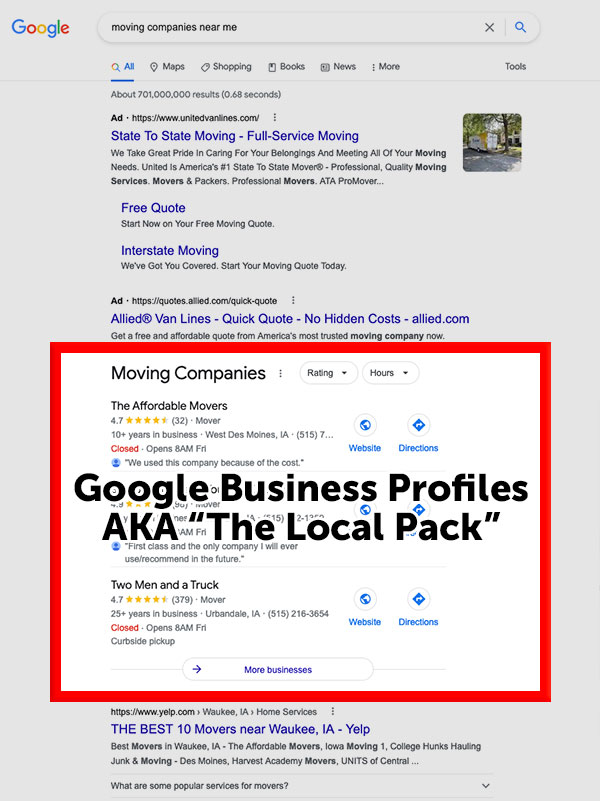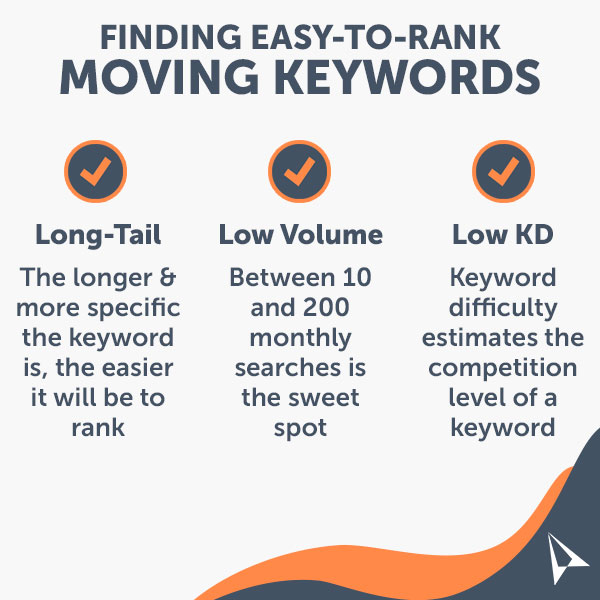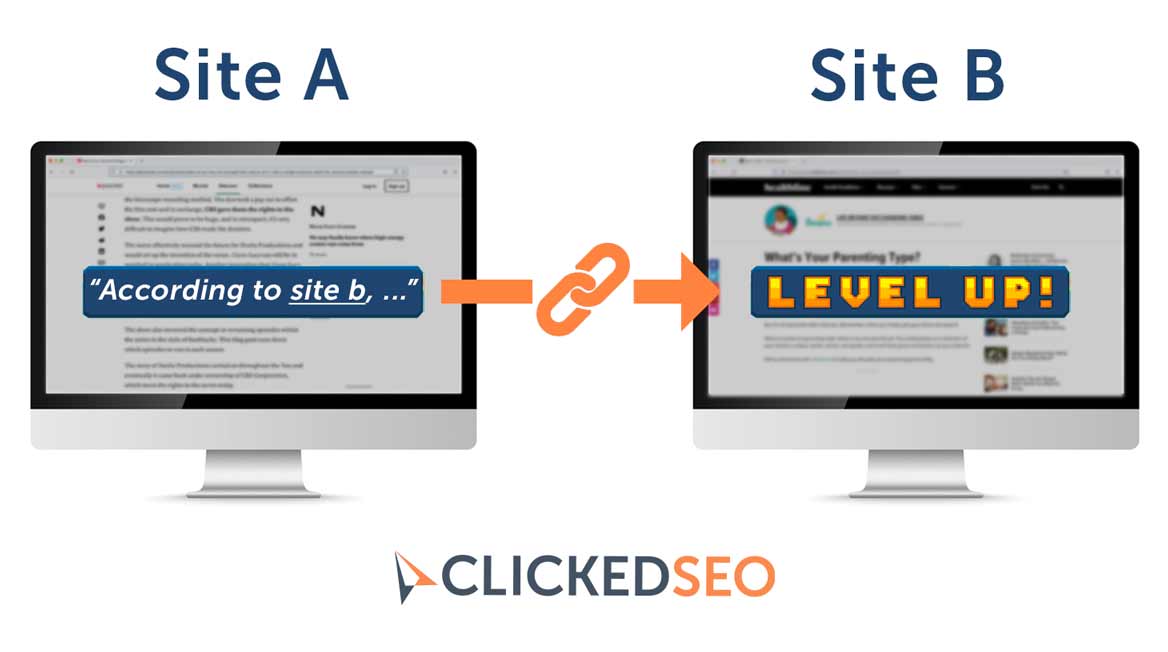Moving Company SEO – Here’s How to Rank Your Moving Website
If you landed on this page, you don’t need me to tell you how important SEO is for your moving company. You need to rank your website, and I’m going to tell you exactly how to do it.
Hi, I am Ryan with Clicked SEO out of Des Moines, IA. I’ve been doing SEO for the past decade and was a mover in college myself. I’ve used this experience to specialize in the moving SEO niche, running several moving websites that rank on a national scale.
Before we get into it, I figure I’ll save you some time. If you want some help from the experts, jump to here to get a free moving website SEO audit from me:
Otherwise keep reading, because this comprehensive guide covers exactly what you need to do to rank your company’s website and put your lead generation on autopilot.
SEO at a glance
SEO (search engine optimization) is the process of enhancing a website’s organic visibility in search engines.
It’s done by modifying your website in a way that search engines like so they rank you. This entails 3 things:
- Technical SEO – Building your website the right way. It includes things like site speed and url structures.
- Content SEO – Developing an ongoing blogging strategy to create topical relevance & rankings.
- Backlink Building – A backlink is when one website links from their site to yours. The more inbound backlinks a website has, the better it will rank. Backlink building is the process of obtaining these links to enhance rankings.
This guide covers all 3 elements, catering specifically to SEO for moving companies.
15 local SEO tips for movers
1. Set realistic expectations & budgets
SEO requires a lot of time, money, and work. If you think you can slap a couple of keywords on a webpage and rank, you will be in for a rude awakening.
Regardless of whether you hire an SEO company, hire someone to do it in-house, or learn it yourself and implement it, SEO will cost you time and money.
Setting the right expectations and setting the right time & money investment will ensure that you are set up for success.
2. Work diligently to learn & implement SEO
When tackling SEO in-house, you need to be willing to invest a significant amount of time into learning & implementing how to enhance your website’s organic visibility. The good news is, you can learn everything you will ever need to know to rank your site online.
This article is an excellent start for learning how to do SEO for movers, so keep reading.
3. Get your reviews up
Reviews are very important for your local moving company. Not only can they help enhance your organic visibility, they will increase your conversion rates (the rate of people who come to your site and contact you with a service inquiry). For example, if your competitor ranks above you but you have better reviews, there’s a good chance you will generate more online business than them even though they outrank you.
4. Build out your local listings
Build out your business listing on places like Google My Business, Bing Places, Yelp, and Yellowbook. Building and managing these listings is referred to as off-page SEO. Specifically, they are called citations, and they can definitely help rank your local business. I suggest that you consider a tool like BrightLocal to make building & managing these citations easy.
5. Create local buzz
Be active in your community with things like volunteer work and sponsorship programs. By doing this, the press can pick up on it and promote your website for you. You can also write your own press releases, which is a great idea for giving your local moving SEO a push in the right direction.
6. Start a blog
Blogging is important for building topical relevance, traffic, and rankings on your site. It is a big time investment, but it is a must-have for a high-performing website.
7. Use the right keywords
In order to optimize your website, you need a good grasp of what keywords you are targeting and how competitive they are. Keyword research is one of the first steps for your moving SEO efforts. Use a tool like Google’s Keyword Planner or Ahrefs’ Keyword Explorer to gain an understanding of what keywords you should target on your website.
8. Conduct competitor research
Pay attention to what the highly performing websites in your area are doing and copy them. I’m not saying to rip them off completely, but if they’re ranking then they’re doing something right and you should consider doing the same.
9. Create a great user experience
User experience (UX) is important not only for SEO but for conversions and creating a good reflection upon your brand. Slow website? You can say adios to that potential traffic, because your users will go elsewhere if your page takes too long to load.
10. Don’t overthink the small stuff
Don’t get too nit picky over things like “Should I put ‘Movers Chicago’ or ‘Chicago Moving Company’ in my page title”. The answer is that since they mean the same thing, it doesn’t really matter. If you overthink nit picky stuff like that you will end up wasting time.
11. Don’t be a spammer
Nobody likes a spammer, and neither do search engines. If search engines catch you trying to manipulate rankings with spammy tactics such as paid links at scale, they won’t rank you (or even worse, they could penalize you).
12. Put your user first
Instead of spamming, focus on putting out awesome content with a great user experience. Search engines pick up on user engagement metrics and use that as a ranking signal. In other words, if users like your website, so will search engines.
13. Make your website conversion-friendly
What good are rankings and traffic without sales? You want to make sure that those who are ready to contact you for a booking inquiry (convert into a lead) are able to do so easily. Do this by putting your contact form above the fold (at the top of the page) on your service pages, and by having a visible “contact” or “book now” link pinned right to your header bar.
14. Don’t slack on the design
In addition to making the site conversion and SEO friendly, you don’t want to overlook the overall layout and design of your site. It needs to load fast, be visually pleasing, and ensure an overall positive user experience. For design inspiration, look online for examples that you like and do your best to replicate the parts that you like while adding your own spin. Here’s some examples of some well-designed moving sites, and if you’re looking for some help from an agency, you can check out this company. Based in Australia and servicing worldwide, they specialize in WordPress web design for service-based and contracting companies like movers, plumbers, and roofers.
14. Consider hiring a pro
SEO takes a lot of time, work, and money. Since time is money, you may see a higher ROI by leaving your website marketing to the experts.
At Clicked SEO, we specialize in SEO specifically for movers – give us a shot by clicking the button below.
Step by step guide to ranking your moving website
Now that we’ve covered some general tips and tricks for enhancing your moving website’s organic visibility, here’s exactly what you need to do to, in order.
1. Create and Optimize your Google Business Profile (formerly Google my Business)
I mentioned the importance of building out citations (local listings) on websites such as Google Business, Yelp, Bing Places, and Yellowbook earlier.
The most important one is your Google Business Profile. As a local mover, it is your lowest hanging fruit and the first thing I suggest you do.

A Google Business Profile is free to create, easy to optimize, and it is shows up above the first SEO result.
The best part, creating and optimizing your Google listing doesn’t even require touching your website.
To optimize your Google Business Profile, fill out all of the information in detail and get as many reviews as you can. That’s all there is to it (Easy right?).
2. Set up SEO tools
Now that your Google listing is set up and optimized, you need to connect your site with some tools to monitor your SEO progress.
Here are 3 free must-have SEO tools
Google Analytics – Google Analytics (GA) allows you to view traffic and how users interact with your site. It can also be used to track inbound leads and see where those conversions and traffic originated from.
Google Search Console – Similar to Google Analytics, Google Search Console (GSC) is a free Google tool that gives you lots of valuable data. GSC is different from GA in that it caters to SEO. Therefore, its a must-have free SEO tool. Use it to see what keywords are bringing people to your site and to monitor and diagnose technical website issues.
Google Ads – It is important to note that Google Ads and SEO are 2 very different things. However, you still want to have an Ads account to help you with SEO and here’s why – you can use it to conduct keyword research for free. After creating your free account navigate over to the Google Keyword Planner to see monthly search volume of keywords and their competition levels.
Paid SEO tools (optional, but highly suggested)
3rd party paid SEO tools offer a lot more in-depth SEO information, such as technical SEO audits, on-demand competitor analysis, customized keyword tracking, and backlink analysis.
If you’re serious about your SEO, you need 1 of these tools in-house or to hire a company that uses 1 or more of these tools.
Popular paid SEO tools are Moz, Ahrefs, and Semrush. My personal favorite is Ahrefs because they make rank tracking easy and have the most robust backlink data.
3. Conduct keyword research and optimize the on-page SEO of your “money pages”
Now that you’ve optimized your Google listing and set up the proper tracking infrastructure, it’s time to get-to-optimizing your website.
The first step is to determine your company’s “money keywords”. A money keyword is a keyword with a transactional intent that brings you business. Likely, your money keywords are “Moving Companies [City Name]”, “Movers [City Name]”, etc. Start by plugging some of these terms into a keyword research tool such as the Google Keyword Planner to determine search volumes and competition levels.
Once you’ve determined your money keywords, you need to delegate or create 1 page per primary keyword target. These are your “money pages”.
If you only have one city location, best practice is to target this keyword on your homepage. I.E. “Cool Dudes Movers – Best Movers in Chicago”.
If you have multiple locations in multiple cities, the best practice is to create multiple service pages, 1 for each city.
For example, If I am a mover on the East Coast with 1 location in NYC and 1 location in Boston, I want 2 pages on my website:
mycoolwebsite.com/movers-nyc
mycoolwebsite.com/movers-boston
My homepage could target something like “East Coast Movers” or simply my brand name.
Now that you’ve determined your money keywords and money pages, you need to conduct on-page search engine optimization for those keywords.
In its most basic sense, on-page SEO is choosing the right keywords and using those keywords in the right places. Specifically, use your primary keyword in your:
- Page title
- Meta title
- Meta description
- Body copy
- Image alts
- URL
But there’s much more to it. This video by Nathan Gotch with Gotch SEO tells you everything you will ever need to know about on-page SEO for your moving company:
The video is kind of long but if you watch and digest the whole thing, I guarantee you that it will be time well spent.
4. Start a blogging strategy
Blogs are articles with informational intent (as opposed to transactional intent, or “money pages”). Many of the SEO concepts we discussed with your transactional pages are the same for your blogs. The only difference is the intent of the searcher.
The importance of blogging
Why do you need to write a blog if that traffic may or may not convert to a sale? Why can’t you just focus on your money (service) pages? After all, you’d rather bring people to your site who are searching for “Movers near me” instead of “How to move for cheap”, “How to move myself”, and “What does moving cost”, for example.
Here’s why writing and ranking blog articles is important for SEO, even if that traffic doesn’t directly convert into a sale:
- To develop topical relevance – Topical relevance means generating traffic and user engagement centered around your niche. If you have lots of informational content about moving, then you are more likely to rank your transactional keywords, such as “movers near me”.
- To generate referral sales – Some blog articles have the potential to directly bring you business. For example, if you write an article “What does moving cost in NYC” and you are an NYC mover, there’s a chance that the user will go from that page over to your service page and contact you.
- To build backlinks – A backlink is when one website links to your website. Inbound backlinks are a ranking signal by search engines. If you have good blog content, you are much more likely to generate these inbound links and rank your website.
How to conduct keyword research to find easy-to-rank blog topics
If your website doesn’t have much SEO traction yet, then you want to make sure you are choosing low competition keyword targets so you can rank.
To understand why you need to start out targeting easy-to-rank keywords, I need to explain the concept of Domain Authority. Domain Authority (DA) is a metric from 0 to 100 created by Moz that measures the backlink profile of a website.
Remember, the more high quality inbound backlinks that a website has, the better it will rank. So a website with a DA of 10 will have a much more difficult time ranking a blog topic than a website with a DA of 80 – even if the DA 10 website has better content! (Not fair, I know).
DA is essentially the “rankability” of a website. And if your website has a low rankability, you need to target keywords that are within reach. As your DA (number and quality of inbound backlinks) builds, you can begin targeting more competitive keywords.
To find good blog topics that are low-competition, you first need a tool to conduct keyword research. As mentioned earlier, you can use Google Keyword Planner, which is free. Or you can use a paid tool such as Ahref’s keyword explorer. Another quick & easy way to get blog idea inspiration is to look at Google’s “people also ask” (PAA) section. I like to use PAA to get blog topic ideas, then enter them into a keyword research tool to get search volume and competition levels.

To qualify a low competition blog topic, be on the lookout for these things:
- Long-tail keywords – A long-tail keyword phrase is a longer, more specific search query. For example, “How to move” would be a short-tail keyword phrase, and a long-tail keyword phrase would be “Best ways to move across the country”. Since long-tail keywords are more specific, they are generally easier to rank.
- Low-medium monthly search volume – As a website with a low DA or “rankability”, we want to target long-tail keywords that have a low search volume. I usually look in the 10 – 100 monthly searches range. This also means it will be easier to rank. Being ranked first page for a keyword with 10 monthly searches is better than being ranked on the 10th page for a keyword with 10,000 monthly searches.
- Competition levels (KD) – We want to find keywords with low competition levels. Google Keyword Planner’s “competition” and “cost per click” columns can give you a basic idea, but since this is data for Google Ads it’s not always accurate. To really gauge how hard a keyword is to rank you want a paid tool, such as Ahref’s Keyword Planner, which contains a Keyword Difficulty (KD) metric (This tool costs money – if you want me to look up some KD scores for you, just ask).
Example: Using Ahrefs keyword explorer to find low-competition blog topics

Source: Ahrefs
The above image is a real-world example using Ahrefs. Again, sorry but this tool costs money. Lucky for you, my free moving SEO audit will contain customized keyword research & opportunities. Just click below to get started.
In the above image of Ahrefs keyword data, the KD, or “Keyword Difficulty” column is what we are most interested in.
If you write a blog targeting “moving” it won’t just be hard to rank, but literally impossible.
“Moving tips” is getting a bit warmer, but you’d still need a pretty high “DA” or rankability to get that one on the first page.
What about “Local moving tips”? Bingo. The target keyword “Local moving tips” is:
- Long-tail
- Medium search volume
- Low keyword difficulty (KD)
This is a great blog topic idea for a website in its initial SEO stages.
5. Start a link building strategy
I’ve alluded to the concept and importance of backlinks and backlink building, here’s a little more info on what they are and how exactly to build them.
Remember, A link or backlink is when one website links from their website to yours. Search engines use the number and quality of inbound backlinks as a big ranking factor.

They are a ranking factor because they are essentially votes of trust. If one website likes my website enough to cite it as a resource in the form of a backlink, then search engines will like that site too and be more likely to rank it.
You’ve heard me talk about “Domain Authority” (DA), and this metric is a number from 0 to 100 that essentially measures the backlink profile of a website. It is the quickest way to determine how likely a website is to rank.
So a website with lots of high quality inbound backlinks will have a high DA and be able to rank more competitive keywords quicker.
Link building is the process of obtaining these inbound backlinks. In general, link building involves simply asking other websites to link from their website to yours. But since webmasters have no real incentive to do this, you have to get creative and offer unique value propositions. When you are link building, you are essentially a sales person.
It’s not easy to gain these backlinks, but even a few high quality, relevant links can really boost your SEO.
Here are some link building strategies that you can try yourself for your moving website.
SEO link building strategies for movers
- Creating high quality, linkable blog content
- Networking with other businesses & simply asking for links from them
- Guest blogging
- Additions to listicles
Those are some of my favorite link building methods, but here’s a list to a bunch of them: https://neilpatel.com/blog/13-efficient-link-building-strategies-for-busy-marketers/
SEO link building tips for movers
- Be patient – link building and SEO takes time
- Don’t build spammy links
- Focus on good content
- Prioritize them – links are important
The bottom line with moving backlinks is they are tough to build but very important. Focus on building good content and high quality, niche-relevant inbound links to this content with some of the methods mentioned above. Even 1 or 2 good links could really skyrocket your web presence.
5 Benefits of hiring a moving SEO expert
1. Save time
You may think its cheaper to tackle SEO in-house, but as the (very cliche) saying goes, time is money. So you could end up indirectly saving yourself money by leaving it to the pros.
2. Focus on your business
As a moving company owner/manager/worker, you don’t have time to be messing with internet stuff. Leave the marketing to the professionals so you can focus on handling other elements of keeping your business running smoothly.
3. Better results
Sure, you can handle SEO yourself in-house. In fact, if you follow this guide to a tee I have no doubt that you’ll be in a very good spot.
However, if you delegate this specialized skillset to those with the right training & experience, you will see faster, better results – no doubt.
4. 1 flat, measurable expense
If you undertake SEO in-house, you will have multiple expenses, including your time, an SEO tool, website hosting, & link building fees to name a few.
By paying an SEO company, you are housing all of these expenses under one roof for 1 flat, measurable recurring expense.
5. Peace of mind
Moving can be a stressful industry to be in – Damage claims & ungrateful clients coupled with physical exhaustion is enough to stress out the most seasoned of veterans. I know this first-hand – I was a mover for 7 years during my younger days.
Leaving your internet marketing to a professional company will be 1 less thing on your plate, giving you the peace of mind to relax & run your business.





